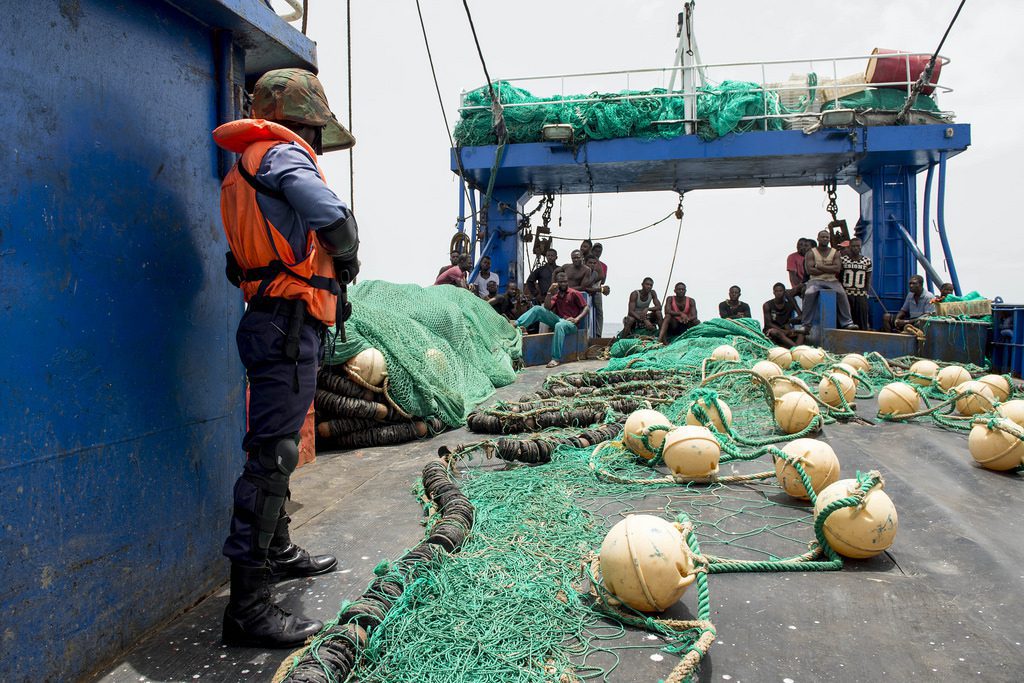Ghanian Navy Conducts Illegal Fishing Inspection (Image Via U.S. Navy)
(TheGuardian) Facial recognition software is most commonly known as a tool to help police identify a suspected criminal by using machine learning algorithms to analyze his or her face against a database of thousands or millions of other faces. The larger the database, with a greater variety of facial features, the smarter and more successful the software becomes – effectively learning from its mistakes to improve its accuracy.
Now, this type of artificial intelligence is starting to be used in fighting a specific but pervasive type of crime – illegal fishing. Rather than picking out faces, the software tracks the movement of fishing boats to root out illegal behavior. And soon, using a twist on facial recognition, it may be able to recognize when a boat’s haul includes endangered and protected fish.
The latest effort to use artificial intelligence to fight illegal fishing is coming from Virginia-based The Nature Conservancy (TNC), which launched a contest on Kaggle – a crowdsourcing site based in San Francisco that uses competitions to advance data science –earlier this week. TNC hopes the winning team will write software to identify specific species of fish.
The program will run on cameras which are installed on fishing boats and used for documenting the catch. The software will put a marker at each point in the video when a protected fish is hauled in. Inspectors, who currently spend up to six hours manually reviewing a single 10-hour fishing day, will then be able to go directly to those moments and check a fishing crew’s subsequent actions to determine whether they handled the bycatch legally – by making best efforts to return it to the sea unharmed.
TNC expects this approach could cut review time by up to 40% and increase the monitoring on a boat.
The winning team of the contest will earn a prize of $150,000. Then, as part of its campaign to reduce bycatch and illegal fishing in the region, TNC will work with the governments of Palau, Federated States of Micronesia, Solomon Islands and Marshall Islands to install the software, for free, on the electronic monitors of selected fishing boats.
If the software proves effective in reducing the labor costs and improving the accuracy of identifying protected species, then it could become a standard feature in electronic monitors. TNC will own the intellectual property of the winning software and make it free to the equipment makers, which include Satlink and Archipelago. The software could become even more widely used if large retailers such as Walmart begin to require electronic monitors on their vendor’s fleets.
But it is still early days for policing the fishing industry. For Melissa Garren, chief scientific officer of PDS, that means the market potential is huge. “We should be treating the oceans more like we treat airspace,” she says. “If we had this lack of visibility in the skies, it would be nuts.”
Courtesy of Guardian News & Media Ltd
Unlock Exclusive Insights Today!
Join the gCaptain Club for curated content, insider opinions, and vibrant community discussions.

 Join The Club
Join The Club







![A screengrab of a map showing an earthquake Mindanao, Philippines on Dec 2, 2023. (Image: US Geological Survey [USGS])](https://gcaptain.com/wp-content/uploads/2023/12/Screenshot-2023-12-02-at-10.45.17-AM-copy.png.webp)





